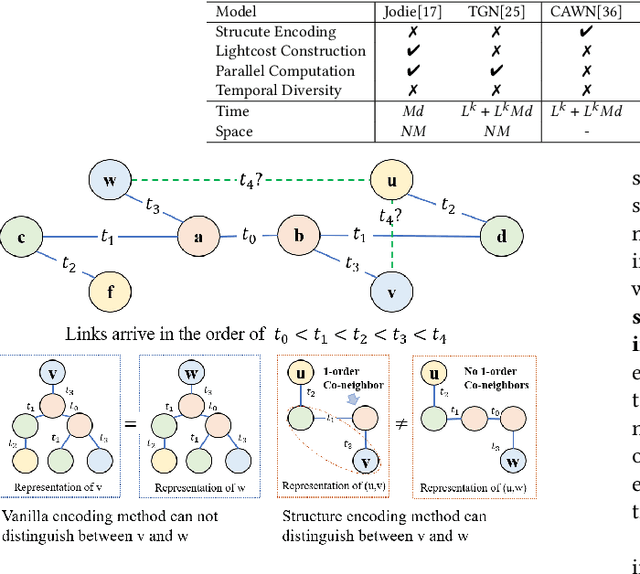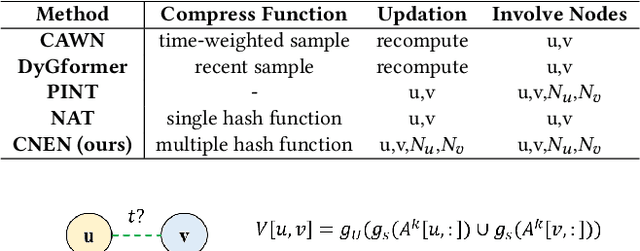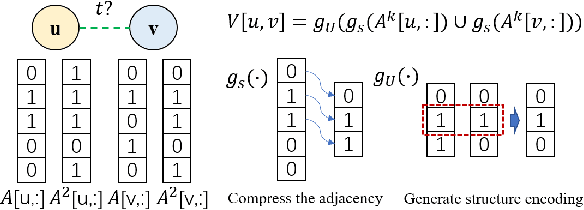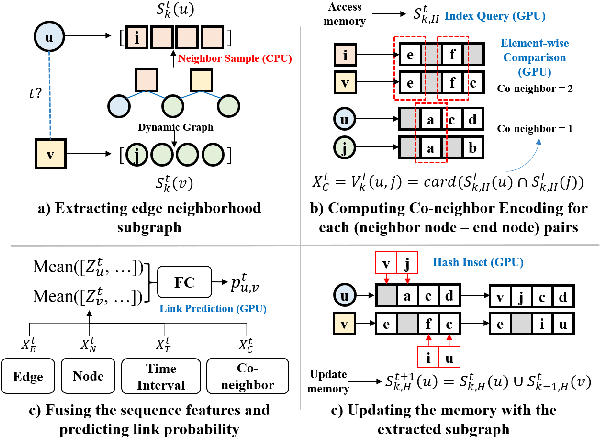Linzhi Peng
Co-Neighbor Encoding Schema: A Light-cost Structure Encoding Method for Dynamic Link Prediction
Jul 30, 2024



Abstract:Structure encoding has proven to be the key feature to distinguishing links in a graph. However, Structure encoding in the temporal graph keeps changing as the graph evolves, repeatedly computing such features can be time-consuming due to the high-order subgraph construction. We develop the Co-Neighbor Encoding Schema (CNES) to address this issue. Instead of recomputing the feature by the link, CNES stores information in the memory to avoid redundant calculations. Besides, unlike the existing memory-based dynamic graph learning method that stores node hidden states, we introduce a hashtable-based memory to compress the adjacency matrix for efficient structure feature construction and updating with vector computation in parallel. Furthermore, CNES introduces a Temporal-Diverse Memory to generate long-term and short-term structure encoding for neighbors with different structural information. A dynamic graph learning framework, Co-Neighbor Encoding Network (CNE-N), is proposed using the aforementioned techniques. Extensive experiments on thirteen public datasets verify the effectiveness and efficiency of the proposed method.
DyGKT: Dynamic Graph Learning for Knowledge Tracing
Jul 30, 2024



Abstract:Knowledge Tracing aims to assess student learning states by predicting their performance in answering questions. Different from the existing research which utilizes fixed-length learning sequence to obtain the student states and regards KT as a static problem, this work is motivated by three dynamical characteristics: 1) The scales of students answering records are constantly growing; 2) The semantics of time intervals between the records vary; 3) The relationships between students, questions and concepts are evolving. The three dynamical characteristics above contain the great potential to revolutionize the existing knowledge tracing methods. Along this line, we propose a Dynamic Graph-based Knowledge Tracing model, namely DyGKT. In particular, a continuous-time dynamic question-answering graph for knowledge tracing is constructed to deal with the infinitely growing answering behaviors, and it is worth mentioning that it is the first time dynamic graph learning technology is used in this field. Then, a dual time encoder is proposed to capture long-term and short-term semantics among the different time intervals. Finally, a multiset indicator is utilized to model the evolving relationships between students, questions, and concepts via the graph structural feature. Numerous experiments are conducted on five real-world datasets, and the results demonstrate the superiority of our model. All the used resources are publicly available at https://github.com/PengLinzhi/DyGKT.
 Add to Chrome
Add to Chrome Add to Firefox
Add to Firefox Add to Edge
Add to Edge